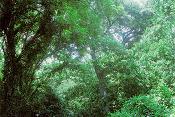Texas Plant Information Database

Appendix 1
Criteria for Selection of Preferred Plants for Landscapes, Erosion Control, and Wildlife Use
Selection of preferred plant species is based on the following criteria:
-
Emphasize native plant species that occur locally. Mast producers, especially a diversity of oaks, walnut, hickories, persimmon, and plums are examples. They are important food and cover plants.
-
Weedy, invader native species should not be emphasized (e.g., ash, elm, cottonwood, pine, sycamore.) In general, such species have great capacity for natural dispersal and are adapted to disturbed soil sites.
-
Nut-bearing trees (e.g., oaks, walnuts, and hickories) should be planted as saplings because they have limited capacity for dispersal. In contrast, trees, shrubs, and woody vines with winged or fleshy fruits are dispersed by wind or animals. Thus, these plants can be provided more sparingly.
-
Native plants are adapted to the local environment and will persist through periods of environmental stress. Most exotic plants cannot similarly persist and are also overrated as wildlife food and cover. However, a few exotic species can establish themselves by out-competing native plants. They then become serious persistent pests, difficult if not impossible to control or eradicate.